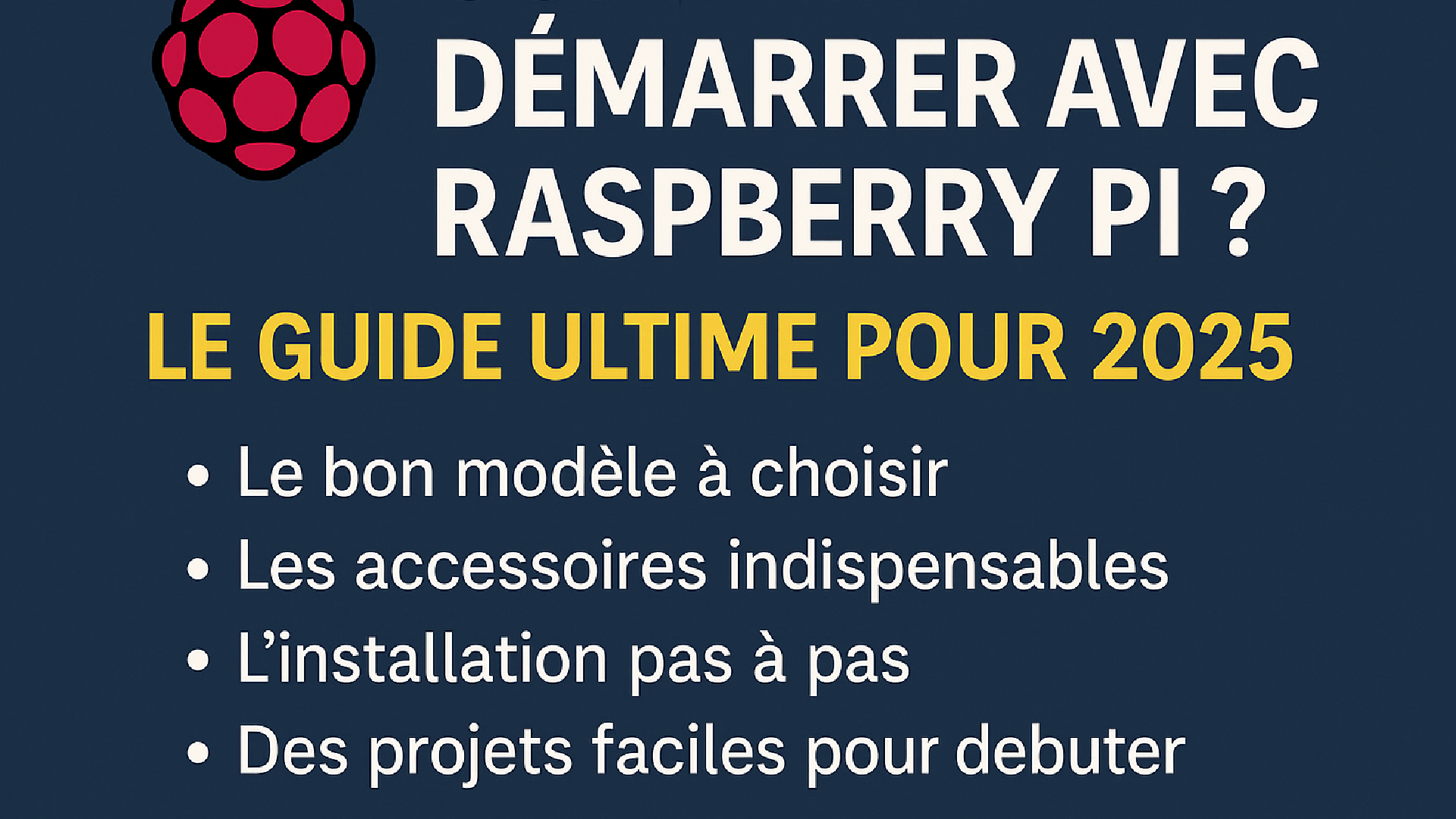
Getting started with Raspberry Pi
You've just bought a Raspberry Pi and you ask yourself where to start ? This affordable mini-computer is a a real toolbox for makersideal for learning, tinkering, automating and creating innovative projects.
In this guide, you will discover everything you need to know to get started with Raspberry Pi in 2025 :
✅ The right model to choose
✅ Indispensable accessories
✅ Step-by-step installation
✅ Easy projects to get you started
What is a Raspberry Pi and why use it?
The Raspberry Pi is a single-board nanocomputer developed by the Raspberry Pi Foundation.
Its strengths:
- Affordable price (from €15)
- Energy saving
- Linux, IoT, server, robotics compatible
It's perfect for learn programmingWe can also host services and carry out DIY projects (home automation, AI, retrogaming).
Which model to choose in 2025?
- Raspberry Pi 5 (2023) the most powerful, ideal for web servers, AI, light office applications.
- Raspberry Pi 4 : consistently high performance, excellent value for money.
- Raspberry Pi Zero 2 W compact and economical for connected objects or portable projects.
⚠️ Attention Prices can vary, especially in times of shortage.
What you need to get started
- microSD card (minimum 32 GB, class A1 or A2)
- 5V/3A power supply (USB-C for Pi 4/5)
- Ventilated case (important for Pi 5)
- Keyboard, mouse, HDMI cable (for initial configuration)
Install Raspberry Pi OS (ex Raspbian)
- Download Raspberry Pi Imager (Windows, macOS, Linux).
- Insert the SD card and select Raspberry Pi OS 64-bit.
- Configure Wi-Fi and SSH (optional) directly in Imager.
- Start up the Pi and let the installation run its course.
Network connection and remote access
- Wi-Fi : configured via Imager or
raspi-config. - SSH activate via
sudo raspi-config→ Interfacing Options → SSH. - SSH access:
ssh pi@ip_address
(Default password : raspberry → to be changed immediately!)
Install your first tools
Update your system :
sudo apt update && sudo apt upgrade -y
Add Git, Python, Node.js depending on your projects.
5 easy projects to get you started
- Web server (Apache or Nginx)
- Pi-hole (network ad blocker)
- Media Center with Kodi
- Mini-cloud with Nextcloud
- Retro console with RetroPie
Tips for going further
- Docker for lightweight virtualization
- Home Assistant for home automation
- Overclocking to boost performance
- Automation with cron or Node-RED
Useful resources
Conclusion
The Raspberry Pi is more than just a mini-PC It's a platform for experimentation, learning and innovation.
So, ready to launch your first project ?
